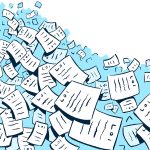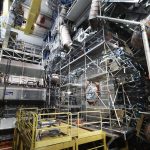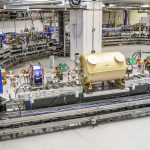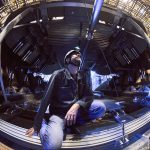From Science, Jan. 27, 2021: Physicists await the Muon g-2 experiment’s results, which could come as early as this spring, to see whether they confirm that muons are slightly more magnetic than theory predicts. If so, it will signal new physics. Fermilab scientists discuss the experiment, as well as the secrecy required to blind themselves from affecting the results.
Author Archive
From Oak Ridge National Laboratory, Jan. 26, 2021: The COHERENT particle physics experiment at Oak Ridge National Laboratory has firmly established the existence of a new kind of neutrino interaction. To observe this interaction, scientists used CENNS-10, a liquid argon detector built at and on loan from Fermilab.
From Forbes, Jan. 19, 2021: Fermilab scientist Don Lincoln contextualizes the discovery of the most distant (and therefore oldest) supermassive black hole found thus far, which is 10 trillion times brighter than our sun.
Fermilab scientists and engineers are developing a machine learning platform to help run Fermilab’s accelerator complex alongside a fast-response machine learning application for accelerating particle beams. The programs will work in tandem to boost efficiency and energy conservation in Fermilab accelerators.
High-intensity particle beams enable researchers to probe rare physics phenomena. A proposed technique called optical stochastic cooling could achieve brighter beams 10,000 times faster than current technology allows. A proof-of-principle experiment to demonstrate OSC has begun at Fermilab’s Integrable Optics Test Accelerator.
Matter and antimatter particles can behave differently, but where these differences show up is still a puzzle. Scientists on the LHCb experiment at the Large Hadron Collider study much more subtle differences between matter particles and their antimatter equivalents. A recent analysis allowed them to revisit an old mystery — an asymmetry between asymmetries.







